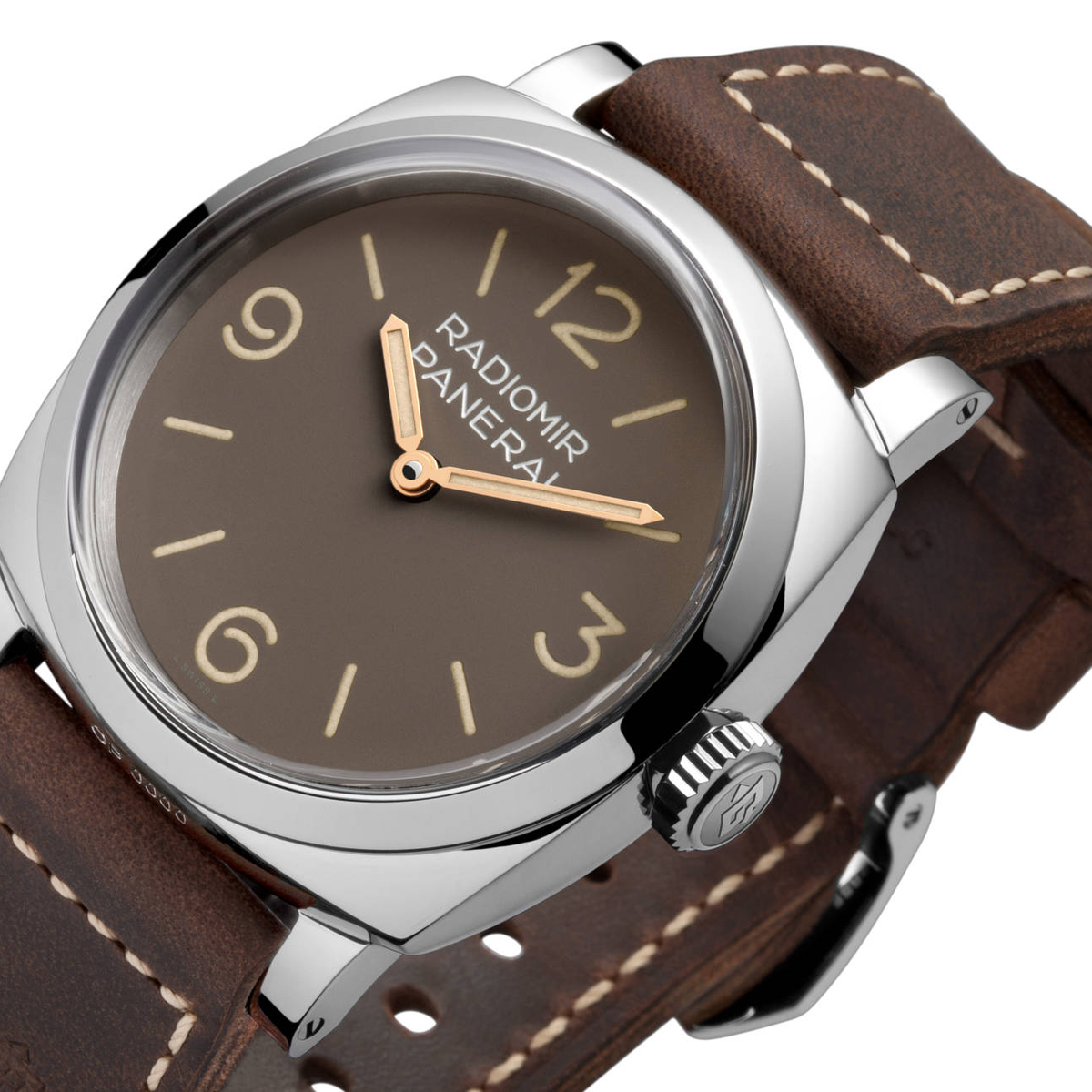Launch Year
1938
Functions
hours, minutes
Movement
mechanical
Distinctive features
cushion-shaped case produced for frogman commandos of the Italian Royal Air Force, luminescent initially ensured by a radium-based powder, sandwich-type dial
Officine Panerai watches have an extraordinary history. They were first produced in complete secrecy, mainly for the commandos of the Royal Italian Navy. Initially appearing as prototypes and tested by the combat divers of the First Submarine Group Command in 1936, the voluminous Radiomir diver's watches (47 x 47 mm) were put into production in 1938.
From then on, Officine Panerai adopted the "sandwich" dial, which it has maintained ever since. This consists of two superimposed metal plates, a solid baseplate and an upper plate bearing numerals and hour-markers. This construction, which creates cavities and enables a greater quantity of luminescent material to be applied, proved extremely effective with the Radiomir. After World War II, radium-based Radiomir – considered too dangerous because it was too radioactive – was gradually replaced by tritium-based Luminor. Proof that the process took several years, the "Egiziano Piccolo" and then the huge "Egiziano" of the Egyptian Navy (60 x 60mm) still contained Radiomir in 1954 and 1956. After the brand began marketing its models to the public in 1993, luminescence was quickly ensured by the most efficient modern product, the Super-LumiNova®.
Nowadays, the name Radiomir refers to the collection inspired by the very first military watch models created by Officine Panerai. The large cases are all cushion-shaped, but one can distinguish between the basic Radiomir and the 1940 Radiomir. The former has features borrowed from the 1938 models: wire loop strap attachments – formerly soldered, they are now removable – and a conical crown designed to ensure a better grip. This creation was included in the catalogue in 1997, with a Special Edition in platinum, and then appeared in its subtly modernized version in 2005, when it welcomed the first movement manufactured by Officine Panerai. As for the Radiomir 1940, it incorporates the modifications that made the original model more robust, in the year reflected by its name. With its lugs cut from the same block of metal as the case and its cylindrical crown, it has enriched the brand offer since 2012.
While dials may vary as in the past, they are most often characterized by four Arabic numerals at cardinal points, baton-type hour-markers and a small seconds subdial at 9 o'clock. This configuration is very much in line with the origins, except that, on military watches, the seconds display was often omitted. Such was the case in 1938, when production began, as this type of dial proved to be much easier to read than the prototype dial, which combined Roman numerals, Arabic numerals and hour-markers. Both were particularly highlighted in 2006, in the Radiomir 1936 and Radiomir 1938. The 2016 version of the Radiomir judiciously evokes the eponymous material: the Radiomir 1940 3 Days reinterpreted the "Egiziano Piccolo", one of the last watches to incorporate Radiomir, with a dial "discolored" just as the historical ones tended to be under the effect of radium.
Radiomir naturally contributed to Officine Panerai's public success immediately after its international launch in 1997.
Key Characteristics
• Steel diver’s watch created in 1938 but available to the public as of 1997, case measuring 47 x 47mm, luminescent indications
